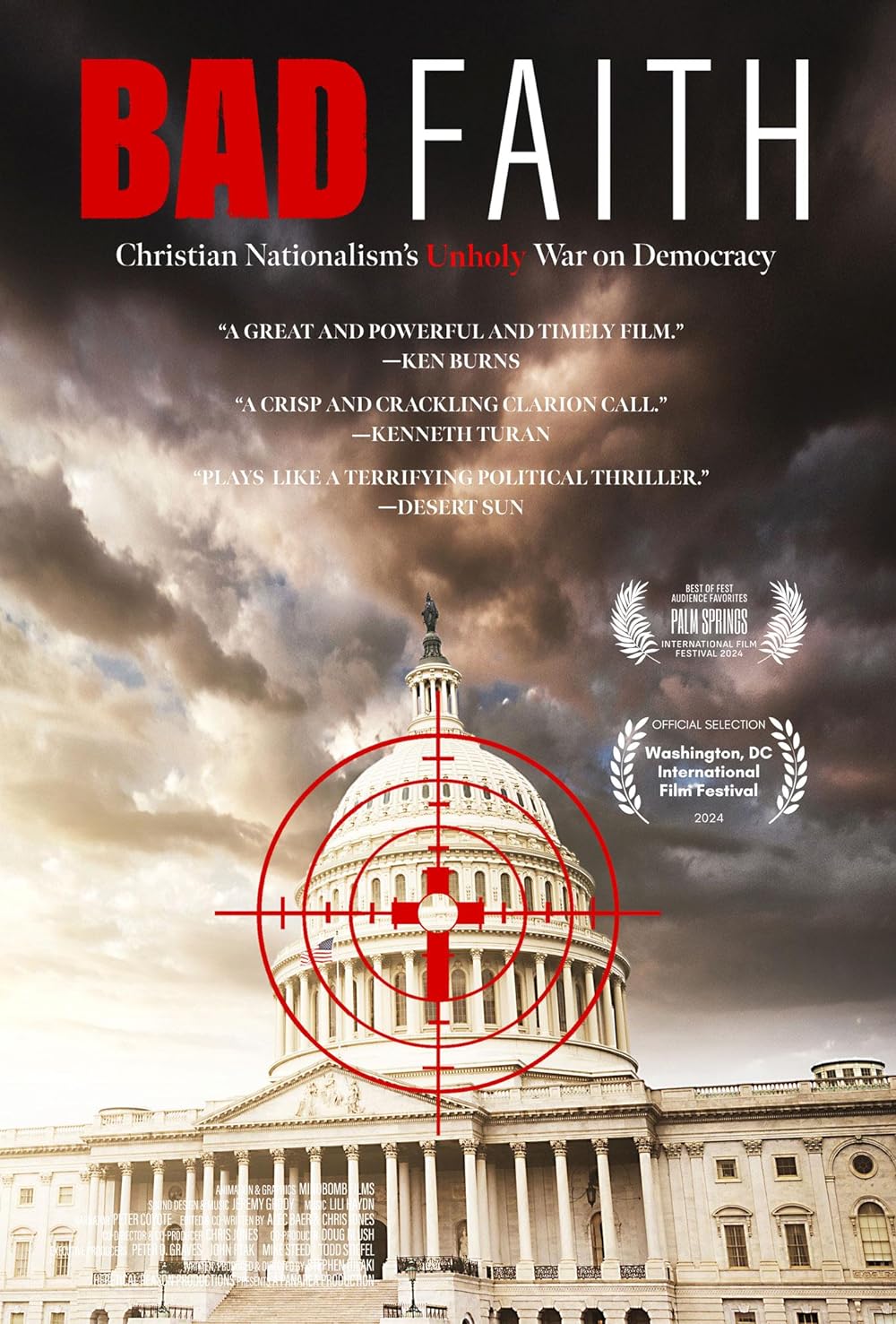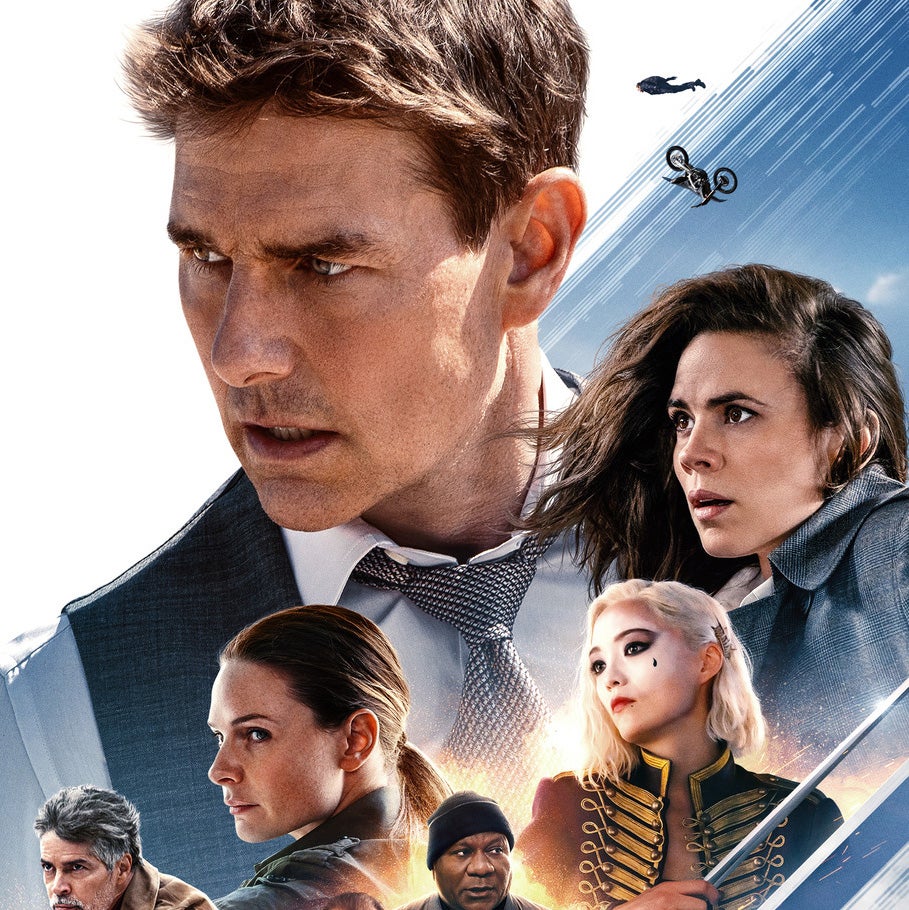We don’t think about it much, but most comedies are about existential crises.
Whether it’s the bewitched lovers in A Midsummer Night’s Dream, an heiress grappling with a leopard in Bringing Up Baby or Moe bopping Larry, and Curly, comedies let us laugh at characters who are trying to make sense of an absurd world. And that makes us feel a little better and surer about our own attempts to find purpose and meaning.
And they do it in movies, which, like all stories, have an internal logic, a narrative arc, even a sense of inevitablilty due to the economies of time, which dictate that every detail revealed in the movie will have some relevance to what develops. So no matter how chaotic the situation faced by the characters, there is at some level a sense of order that is almost as reassuring as the chance to laugh.
There aren’t many comedies about existentialism, though, at least not explicitly, and the brilliance of this movie is the way it uses the form of the screwball comedy to both represent and explore existential themes. In other words, while it will be fodder for late-night dorm debates and cultural studies theses for decades, it is also a ton of fun.
Albert Markovski (Jason Schwartzman) is having problems at work. The Open Spaces coalition he put together to oppose development of a marsh and woods is losing its focus, thanks to the charm and dazzle of Brad Stand (Jude Law), a smooth public relations guy from a WalMart-like chain called Huckabees, “the everything store.”
But what Albert wants to understand is a coincidence. He has seen the same tall young African man three times in three very different circumstances and wants to know what that means. So he goes to a husband and wife team of “existential detectives,” Vivian (Lily Tomlin) and Bernard Jaffe (Dustin Hoffman) and asks them to investigate. He just wants them to examine the coincidence and tells them to stay away from his office, but since they believe that everything is connected they accept no limitations; they may not even see any.
Meanwhile, another client of the existential detectives is having, well, an existential crisis. A fireman named Tommy (Mark Wahlberg) is reading a book by Caterine Vauban (Isabelle Huppert) that says nothing in life is connected or meaningful, and that feels much more real to him than what the Jaffes have been telling him. Brad Stand has also hired the Jaffes, and is not prepared for what happens when they begin talking to his girlfriend, Dawn (Naomi Watts), the bikini-wearing Huckabees spokesmodel.
The movie has a sure sense of comic structure and timing, with classic comedy conventions like high-speed dialogue, wild plot permutations, family craziness, over-reaction to trivial things, under-reaction to non-trivial things, some sharp satire about our consumer culture, a little slapstick, some terrible poetry, and of course a few romantic complications. And, as Brad knows, a stop-by from a real celebrity doesn’t hurt, either.
In addition, it has meta and meta-meta messages, the form of the movie tied to its content about the debate between those who believe that everything is connected and meaningful and those who think everything is, well, nothing. In a sense, like Huckabees, the Jaffes operate an “everything store.” Caterine, their former student and now rival, operates the “nothing store,” telling Tommy and Albert that life is random, brutish, and meaningless and so the best thing to do is knock yourself out of the awareness of it all.
The movie is clearly the product of someone who has waded through teutonic philosophy and eastern mysticism and fortunately come out the other side with his sense of humor intact. The words may be the same as a philosophical treatise, but when recited while dodging a lawn sprinkler or getting hit in the face with a ball, it completely transforms, even transcends the meaning, a philosophical statement of its own. It makes the same point as in Stardust Memories, when the supersmart aliens tell Woody Allen that if he wants to help humanity he should write funnier jokes.
Director and co-screenwriter David O. Russell has a lot of fun playing with the classic philosophical dualities/debates:
- The nihilist/isolationist approach to the meaning of life versus the “we’re all connected and inseparable and the center is everywhere” approach;
- The shallow, successful materialist dressed in pastel colors versus the dark, mopey, sincere poetic failure dressed in black and white;
- The beautiful model who exploits her physical appearance versus the reformed girl who seeks a higher meaning covered in dirt and overalls;
- The disavowal of physical reality versus completely carnal wallowing in the mud; and
- The duality of an “other” (doppelganger/ secret sharer type) who is used as a buddy in a support program. We also see “others” in the Vivian/Bernard, Vivian and Bernard/Caterine and Albert/Brad relationships.
Russell also manages to throw in debates about politics, economics, psychology and religion, and utilitarianism versus idealistic extremism.
And, just as Vivian and Bernard explain, everything is connected. In casting Schwartzman’s real-life mother, Talia Shire (best known as Connie in The Godfather saga and Adrian in Rocky) as his mother in the movie, is Russell making a meta-comment about connectedness? Or is he making a meta-meta-comment about our fascination with celebrities? Or is he just doing it for fun, which, if you think about it, is a kind of meta-meta-meta comment? Probably all of the above, just as Vivian’s getting hit by the sprinklers as she spies on Brad is both a statement about the obstacles to transcending physical reality and pure giddy slapstick pleasure.
Brad and Albert have a lot more in common than they think. Their names put them next to each other at one end of the alphabet with 24 letters yet to go. They are both competing for the support of the coalition and for control of the woods and marsh. They both compartmentalize, each willing to save just part of the undeveloped area and call it a success — though their ideas of how much should be saved differs.
The difference between philosophy and art is that philosophy tries to deal with these dichotomies in a logical and linear way, while art is free to ricochet back and forth between them like a pinball machine. Russell shows that when the characters floundering for meaning go off to sit on a big rock fenced off from the rest of the world, and with lots of sight gags, as with the polaroid of on character crying digitally turns into his nemesis.
Russell directs his crackerjack cast at top speed and they all perform with buoyant conviction and pure comic energy that is delicious to watch. Hoffman, Tomlin, and Wahlberg are all marvelous. This is Law’s best performance so far, stunning in its fearlessness and control of tone. He keeps Brad a character and not a caricature, when he is at his most charming and when he begins to unravel. His Brad is himself a master actor, always checking out the audience reaction, capturing attention and drawing people in by excluding someone else. Law lets us see how effective Brad can be, and then what happens when the facade begins to crack. In another movie, it would be the stand-out, but in this ensemble, it is just one more reason to say that I HEART “I HEART Huckabees.”
Parents should know that the movie has extremely strong language (it begins with a very colorful stream of epithets), and some sexual references and one brief explicit sexual situation. Characters drink and smoke. The movie includes mild comic peril and some tense confrontations.
Families who enjoy this film will also enjoy the other movies by David O. Russell, including Three Kings (also featuring Wahlberg) and Flirting with Disaster (also featuring Tomlin) and Schwartzman’s performance in Rushmore. They will also enjoy movies about being fully conscious like Waking Life and Eternal Sunshine of the Spotless Mind.
Families may also enjoy finding out more about existential philosophy, psychology, and analysis.






